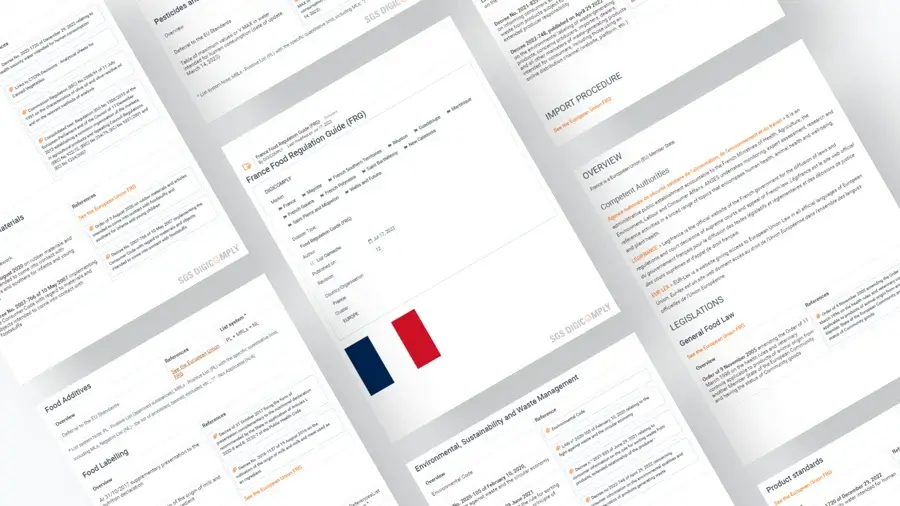What is Committee for Veterinary Control and Supervision
The Committee for Veterinary Control and Supervision (CVCS) is a pivotal regulatory body responsible for overseeing veterinary practices, animal health, and the safety of animal-derived food products in various countries. Established to ensure compliance with national and international veterinary standards, the committee plays a crucial role in maintaining the integrity of the food supply chain, providing consumers with safe and high-quality food products.
Objectives and Functions
The primary objectives of the CVCS include:
- Regulation and Compliance: Establishing and enforcing regulations that govern veterinary practices and animal health.
- Monitoring Animal Health: Conducting surveillance programs to monitor and control animal diseases that can affect food safety.
- Food Safety Assurance: Ensuring that all animal products entering the food supply comply with safety standards.
- Public Awareness: Educating the public about food safety, animal health, and the importance of veterinary care.
Impact on the Food Industry
The CVCS significantly impacts the food industry through various mechanisms:
1. Ensuring Food Safety
One of the CVCS's core functions is to guarantee the safety of food products derived from animals. This involves:
- Regular inspections of farms, slaughterhouses, and processing facilities to ensure adherence to hygiene and safety standards.
- Implementation of traceability systems that track the origin of animal products, enabling rapid response in case of foodborne illness outbreaks.
- Collaboration with food safety authorities to harmonize regulations and ensure compliance with international food safety standards, such as those set by the World Organisation for Animal Health (OIE).
2. Promoting Animal Welfare
Animal welfare is a critical component of the CVCS's responsibilities. The committee enforces regulations that promote humane treatment of animals in the food production system. This includes:
- Setting standards for housing, feeding, and transportation of animals to minimize stress and injury.
- Conducting training programs for farmers and industry stakeholders on best practices in animal husbandry.
- Implementing programs for monitoring and evaluating animal welfare practices across the food supply chain.
3. Enhancing Veterinary Services
The CVCS also plays a vital role in the veterinary sector by:
- Establishing training and certification programs for veterinarians to ensure they are equipped with the latest knowledge and skills.
- Promoting research and development in veterinary medicine and animal health.
- Facilitating communication and collaboration among veterinary professionals, researchers, and policymakers.
4. Supporting Sustainable Practices
In response to growing environmental concerns, the CVCS is increasingly focused on promoting sustainable practices within the food industry. This includes:
- Encouraging the use of sustainable farming practices that minimize environmental impact.
- Promoting the responsible use of veterinary pharmaceuticals to reduce the risk of antimicrobial resistance.
- Supporting initiatives aimed at reducing food waste and improving resource efficiency in food production.
Challenges Facing the Committee
Despite its significant role, the CVCS faces numerous challenges, including:
- Resource Limitations: Insufficient funding and staffing can hinder the committee's ability to conduct thorough inspections and monitoring.
- Emerging Diseases: The emergence of new zoonotic diseases poses ongoing risks to both animal health and public safety.
- Global Trade Considerations: Balancing domestic regulations with international trade agreements can complicate compliance efforts.
Future Directions
Looking ahead, the CVCS is poised to adapt to changing landscapes in veterinary health and food safety. Key areas for future development include:
- Incorporating Technology: Utilizing advancements in technology, such as data analytics and blockchain, to enhance traceability and monitoring of animal products.
- Strengthening Partnerships: Collaborating with international organizations and other regulatory bodies to share knowledge and best practices.
- Emphasizing Education: Increasing efforts in public education campaigns to raise awareness about food safety and animal welfare.
Conclusion
The Committee for Veterinary Control and Supervision plays an indispensable role in safeguarding public health and ensuring the integrity of the food industry. By enforcing regulations, promoting animal welfare, and addressing emerging challenges, the CVCS not only protects consumers but also supports sustainable practices within the food supply chain. As the industry continues to evolve, the committee’s adaptability and commitment to excellence will be crucial in navigating the complexities of food safety and veterinary health.





